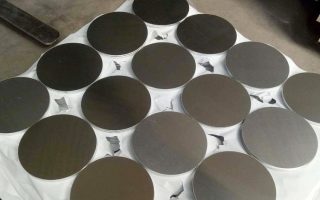Introduction
In the ever-evolving automotive industry, the pursuit of lightweight and fuel-efficient vehicles has become a top priority for manufacturers and consumers alike. In recent years, the innovative use of aluminum circle plates in automotive design has emerged as a game-changer, revolutionizing vehicle performance and fuel economy. This article explores how aluminum circle plates are driving innovation in automotive design, offering lightweight solutions without compromising on strength and safety.
1. The Shift Towards Lightweight Automotive Design
As environmental concerns and fuel efficiency regulations gain prominence, automotive manufacturers are increasingly turning to lightweight materials to achieve reduced emissions and improved fuel economy. Aluminum, known for its excellent strength-to-weight ratio, has become a focal point in this endeavor.
2. Unleashing the Potential of Aluminum Circle Plates
Aluminum circle plates, circular flat pieces of aluminum carefully crafted through precision stamping, have been identified as a key component in achieving lightweight performance in automotive design. These innovative circular plates are reshaping the way vehicles are built and driven.
3. Advantages of Aluminum Circle Plates in Automotive Design
- Weight Reduction: Aluminum circle plates significantly reduce the overall weight of vehicles, leading to improved acceleration, braking, and handling. Lighter vehicles require less energy to propel, resulting in enhanced fuel efficiency.
- Strength and Durability: Despite their lightweight nature, aluminum circle plates offer remarkable strength and durability, making them ideal for use in critical automotive components.
- Enhanced Safety: Aluminum circle plates provide a strong yet lightweight foundation for safety components, such as airbag housings and crash structures, ensuring improved occupant protection.
- Corrosion Resistance: Aluminum’s natural oxide layer grants it excellent corrosion resistance, extending the lifespan and durability of automotive components in various weather conditions.
4. Applications in Automotive Design
- Chassis Components: Aluminum circle plates are used in the production of chassis components, including control arms, subframes, and suspension parts, reducing unsprung weight and enhancing vehicle agility.
- Body Panels: Lightweight aluminum circle plates are employed for outer body panels, such as hoods, doors, and fenders, contributing to fuel efficiency and improving overall vehicle dynamics.
- Wheels: Aluminum circle plates form the foundation of lightweight aluminum wheels, reducing rotational mass and contributing to better handling and improved fuel efficiency.
- Engine Components: Engine parts, such as cylinder heads and blocks, benefit from aluminum circle plates for their weight-saving properties, optimizing engine efficiency and performance.
5. Future Perspectives
As the automotive industry continuously evolves, so will the use of aluminum circle plates in innovative automotive designs. Advancements in aluminum alloys, surface treatments, and manufacturing techniques are expected to unlock further potential for lightweight performance and fuel efficiency.
Conclusion
Aluminum circle plates are leading the charge in transforming automotive design and manufacturing. As the automotive industry embraces lightweight materials to meet environmental demands and improve vehicle performance, aluminum circle plates have emerged as a key enabler of lightweight solutions without compromising on strength and safety. From chassis components to body panels and engine parts, aluminum circle plates are driving innovation, creating a future of lighter, more fuel-efficient, and environmentally conscious vehicles.

